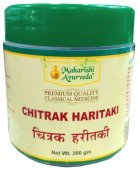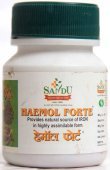Worm: 2 definitions
Introduction:
Worm means something in Hinduism, Sanskrit. If you want to know the exact meaning, history, etymology or English translation of this term then check out the descriptions on this page. Add your comment or reference to a book if you want to contribute to this summary article.
In Hinduism
Vastushastra (architecture)
Source: Shodhganga: Elements of Art and Architecture in the Trtiyakhanda of the Visnudharmottarapurana (vastu)If Worms are found on Trees, then it should not be used for gathering Wood as a Material for the Construction of Temples, according to the Viṣṇudharmottarapurāṇa, an ancient Sanskrit text which (being encyclopedic in nature) deals with a variety of cultural topics such as arts, architecture, music, grammar and astronomy.—Finding of proper types of materials is one of the important aspects for any construction. In the Viṣṇudharmottarapurāṇa, the architect is suggested to go to the forest to collect appropriate wood for temples in an auspicious day after taking advice from an astrologer. The woods of the trees [e.g., which are eaten by worms, etc.] are totally discarded for making temples. [...] The eco-friendly suggestions of Viṣṇudharmottarapurāṇa are seen to protect the greenery and to balance a pollution free environment.

Vastushastra (वास्तुशास्त्र, vāstuśāstra) refers to the ancient Indian science (shastra) of architecture (vastu), dealing with topics such architecture, sculpture, town-building, fort building and various other constructions. Vastu also deals with the philosophy of the architectural relation with the cosmic universe.
Ayurveda (science of life)
Toxicology (Study and Treatment of poison)
Source: Shodhganga: Kasyapa Samhita—Text on Visha ChikitsaThe study of Worms (habitat, bites and treatment) refers to one of the topics dealt with in the Kāśyapa Saṃhitā: an ancient Sanskrit text from the Pāñcarātra tradition dealing with both Tantra and Viṣacikitsā—an important topic from Āyurveda which deals with the study of Toxicology (Viṣavidyā or Sarpavidyā).—The Kāśyapasaṃhitā gives deep insights in respect of different mantras as also the different varieties of snakes alongside with all the attendant details. It also deals in detail with different kinds of rat-bites, bites of twenty kinds of insects like spider, scorpion, centipede, fish and worms and their antidotes and long-term treatment regimen for various venomous bites

Āyurveda (आयुर्वेद, ayurveda) is a branch of Indian science dealing with medicine, herbalism, taxology, anatomy, surgery, alchemy and related topics. Traditional practice of Āyurveda in ancient India dates back to at least the first millenium BC. Literature is commonly written in Sanskrit using various poetic metres.
See also (Relevant definitions)
Starts with: Worm bush, Worm grain, Worm grass, Worm herb, Worm seed, Worm tea, Worm weed, Worm wood, Worm woodlike motherwort, Worm-cure albizia, Wormbark false-thorn, Wormbos, Wormgrass, Wormseed, Wormseed goosefoot, Wormseed mustard, Wormweed, Wormwood.
Query error!
Full-text (+1061): Krimi, Kita, Kida, Gandupada, Krimila, Antrada, Leliha, Kakeruka, Krami, Bhulata, Krimiroga, Krimin, Tantukita, Krimika, Miva, Varshabhu, Kimi, Krimighna, Krimija, Ghurghura.
Relevant text
Search found 264 books and stories containing Worm, Worms; (plurals include: Worms, Wormses). You can also click to the full overview containing English textual excerpts. Below are direct links for the most relevant articles:
International Ayurvedic Medical Journal
A review article on ayurvedic approach of krimi roga and its management w.s.r to worm infestation < [2017, Issue II February,]
Clinical evaluation of sushvikadi vati in purishaja krimi(pin worm) (a study protocol) < [2024, Issue 07. July]
Sarvakriminam apakarshanam evaditah karya < [2023, Issue 10. October]
Anthelmintic activity of the essential oil of artemisia pallens wall < [Volume 10 (issue 3), Jan-Mar 1991]
Ethno – veterinary Plants of Nadurbar district of Maharashtra, India < [Volume 24 (issue 3), Jan-Mar 2005]
Tissue changes in Setaria digitata exposed to Strebulus asper extract < [Volume 14 (issue 4), Apr-Jun 1995]
World Journal of Pharmaceutical Research
Krimiroga in children – a literary review < [2020: Volume 9, February issue 2]
Comparative study of anthelmintic activity of Ricinus communis extracts < [2018: Volume 7, November issue 18]
Mustadi Kwath: An Effective Ayurvedic Treatment for Worm Infestation < [2020: Volume 9, May issue 5]
Atharvaveda and Charaka Samhita (by Laxmi Maji)
5a. Worm infestation (Kṛmi) in the Atharvaveda < [Chapter 5 - Diseases and Remedies in Atharvaveda and Caraka-Saṃhitā]
Treatment of Kṛmi (worms) < [Chapter 3 - Diseases and Remedial measures (described in Atharvaveda)]
Validation of Qurs-E-Didan for Intestinal Worms Treatment. < [Volume 8, Issue 6: November-December 2021]
A Review on Bauhinia Variegata and its Phytoconstituents < [Volume 9, Issue 3: May-June 2022]
A Study of Microbial Contamination in Sanjivani Vati, A Cow Urine Prepared Drug < [Volume 9, Issue 1: January-February 2022]
Journal of Ayurveda and Integrative Medicine
Fermentation duration impacts microbiome in Panchagavya formulation. < [Volume 15 (issue 2), Mar-Apr 2024]
Quorum-modulating polyherbal extract's anti-infective potential < [Volume 11 (issue 3), Jul-Sep 2020]
Ayurvedic nootropics' effects on C. elegans Parkinson's models < [Volume 11 (issue 4), Oct-Dec 2020]
Related products
(+12 more products available)





